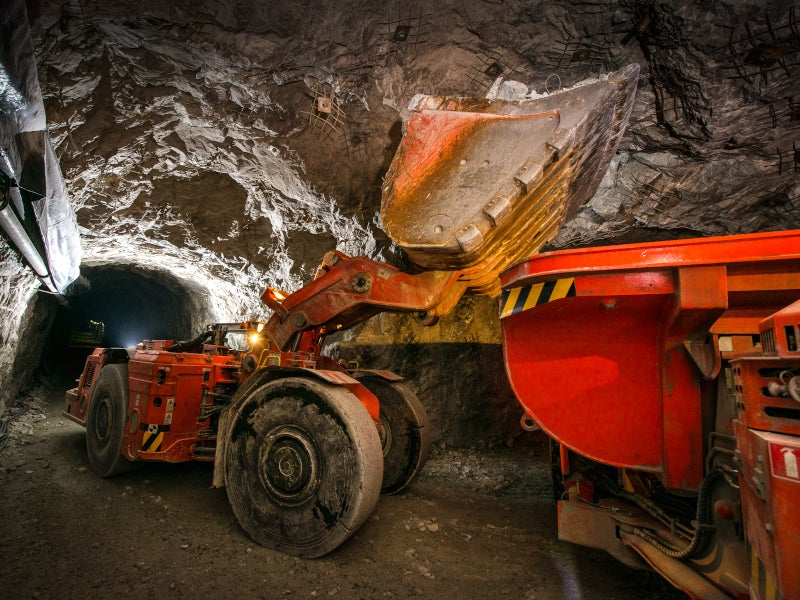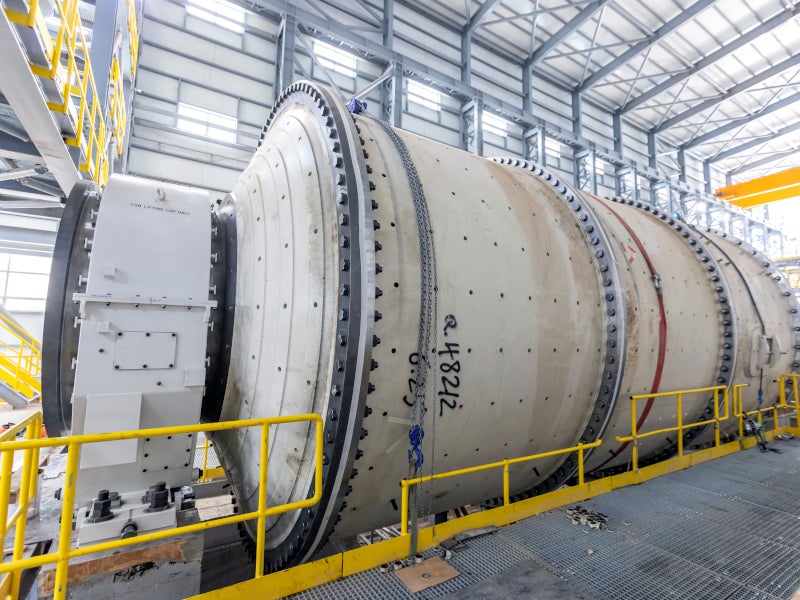The Loulo-Gounkoto gold mine complex, situated in Mali, is a significant gold production venture, comprising both open-pit and underground mining operations. It is one of the world’s largest gold producers and has contributed more than $1bn to Mali’s economy during 2023.
Ownership of the complex is split between the Loulo gold mine, controlled by Societe des Mines de Loulo (Loulo), and the Gounkoto gold mine, managed by Societe des Mines de Gounkoto (Gounkoto). Barrick Gold holds an 80% stake in both Loulo and Gounkoto while the remaining 20% is owned by the State of Mali.
A feasibility study (FS) for the property was completed in 2003, resulting in the construction of an open-pit mine in 2004. The FS for the underground expansion was completed in 2005 while developments commenced in 2006. The first gold from the underground operations was produced in 2011.
A technical report was published in March 2023 in line with updated resources and reserves at the project and an updated life of mine (LOM) plan up to 2037.
Location of the Loulo-Gounkoto gold mine
The Loulo-Gounkoto complex is situated in the western region of Mali, adjacent to the Faleme River, which demarcates the border with Senegal.
The site is approximately 350km west of Bamako, the capital of Mali, 220km south of Kayes, and north-west of Kenieba, the closest town. It is located within the central arrondissement of the Kenieba district, one of the ten districts in the Kayes Region.
Geology and mineralisation of the Loulo-Gounkoto gold mine
The complex lies within the Kedougou-Kenieba Inlier (KKI), an area characterised by significant gold deposits. The geological formation is overlain by upper proterozoic sandstones to the east and south.
The Loulo-Gounkoto mining operations encompass the Yalea and Gara underground mines. The Yalea deposit is primarily situated along the Yalea Shear, intersected by the Yalea Structure. The mineralisation at Yalea is chiefly found within hydrothermally brecciated argillaceous pink quartzites.
The Gara deposit is located within a highly tourmaline-altered greywacke unit, which is resistant to weathering and hence visible on the surface.
Gold reserves at Loulo-Gounkoto
The Loulo-Gounkoto mine is estimated to contain probable reserves of 57 million tonnes (mt) grading 3.99 grams per tonne (g/t) of gold with a total contained metal of approximately 7.2 million ounces (moz) as of December 2023.
Open-pit mining at the Loulo-Gounkoto complex
The Loulo-Gounkoto complex comprises both open-pit and underground mining operations.
The complex consists of two underground mines (Yalea and Gara), a processing facility with an annual capacity of 5mt, and a third underground mine along with an open pit at Gounkoto.
Open-pit mining, predominantly at the Gounkoto, Yalea South, Gara West, Loulo 3, Faraba, and Baboto pits, employs conventional drilling, blasting, loading, and hauling techniques on 10m benches.
The Gara West interim pit was developed in 2023, with waste rock rehandling scheduled for the first quarter of 2024. The Baboto pit is being reopened, with the potential for underground expansion.
Mining operations at Yalea and Gara are expected to continue until 2037. The Loulo open pits which comprise Yalea South and Loulo 3, will be mined through to 2030 while the Gara West pit is planned to be mined out by 2026.
The Gounkoto open pit, also referred to as the ‘Super Pit’, will be mined out in 2025 and the Faraba open pit will be mined beyond 2026. Gounkoto Underground stoping ore is planned in 2023 and mining will continue until 2030.
The open-pit mining fleet includes Liebherr 9350 and 9250 excavators, smaller excavators, Caterpillar 777D and HD785 dump trucks, and Caterpillar 992-wheel loaders. Also included are Caterpillar D9R dozers, Caterpillar 16M graders, Caterpillar 834 pushers, blast drill rigs, and water bowsers.
Underground mining
Underground mining at Yalea, Gara, and Gounkoto utilises the long-hole open-stoping method with paste fill. The Gara main pit and Yalea pit are already fully mined.
The Gara and Yalea underground mines are accessed via twin declines, while stope access is via multiple ramps developed at approximately 500m intervals along strike. The sub-level spacing varies between 20m and 25m.
The Gounkoto underground mine has a single access ramp, from which various other ramps are developed to reach the four main deposit zones.
The underground equipment fleet comprises development and production drills, trucks, load-haul-dumps (LHDs) with remote and fully automated options, and auxiliary machinery.
The Yalea and Gara underground mines are estimated to continue providing ore feed throughout the LOM plan to 2037. The Gounkoto underground mine is set to deliver feed up to 2030.
Ore processing
The Loulo processing plant employs a carbon-in-leach (CIL) gold extraction method, with a capacity of 5mtpa. A future expansion is scheduled for 2027, aiming to increase the plant’s annual capacity to 6.2mtpa starting from 2029.
The plant includes a primary gyratory crusher, which processes more than 700 tonnes per hour (tph). The crushed ore is fed to secondary and tertiary hydrocone crushers in an open and closed circuit, respectively. Soft ore is processed separately using a tooth roll crusher, which discharges directly onto the ball mill conveyor.
The primary ball mill recycles the stockpile for re-crushing. The primary mill output goes to two single-stage overflow ball mills in closed circuit. Additionally, a high-pressure grinding roll (HPGR) treats scats at 100tph.
The CIL circuit comprises 14 tanks, each with a 2,500m³ capacity, providing approximately 40 hours of retention time. The cyclone overflow, at 35% solids, is screened, and the undersize material is directed to a thickener. The thickener underflow, at 50% solids, is used as leach feed.
One pre-oxidation tank is fitted with high-shear reactors to enhance leaching. Cyanide is added to maintain optimal concentration, while an oxygen dispersion system ensures sufficient dissolved oxygen levels. Each CIL tank has an inter-tank screen with a pumping mechanism.
For gold recovery, carbon is moved from CIL tank-3 to an acid wash cone for acid washing, and then transferred to an elution column which uses the Zadra process.
The leach solution containing gold then undergoes electrowinning and the gold gets loaded onto stainless steel mesh cathodes. The cathodes are washed with a high-pressure water stream to remove the plated gold.
The gold is collected, settled, decanted, and dried in an electrically heated calcine following which the sludge is smelted to produce doré bullion.
Site infrastructure
The Dakar to Bamako Millennium highway crosses the Loulo-Gounkoto haul road, 6km north of the Gounkoto pit, provides primary access to the mine and connects it to the rest of Mali and Senegal.
The power required for the complex is supplied by a combination of thermal and renewable sources. The current power requirement is about 53MW. The main power plant at Loulo has a capacity of 72MW, complemented by a 16.2MW thermal addition and a 20MW solar plant. A second solar plant is scheduled to be added in 2024, increasing its capacity to 60MW along with a new battery storage system.
The Faleme River, forming the natural boundary between Mali and Senegal, fulfils most of the complex’s water needs.
Contractors involved
French company Gounkoto Mining Services (GMS), a subsidiary of DTP Mining, is the open-pit mining contractor.
External geotechnical assessments have been consistently carried out since 2005 by SRK Consulting, a leading global consultancy company in natural resource and development solutions; Middindi Consulting, a consultancy specialist in civil and mining projects; and Dempers & Seymour, who are known for their expertise in geotechnical engineering.
The tailings storage facility (TSF) was designed by Knight Piesold, a global consulting firm specialising in mining environmental services. Fraser Alexander, a key player in mining services and solutions, initially managed the TSF’s operations.
Responsibilities for the Engineer of Record, which include oversight of all expansion, were taken over by EPOCH Resources from South Africa. EPOCH Resources is a specialist in waste and tailings consulting for the mining sector.
Paragon Tailings is entrusted with the management of tailings operations at the Loulo-Gounkoto gold mine complex. The company is recognised for its comprehensive tailings services, encompassing operational management and technical solutions in the mining sector.






